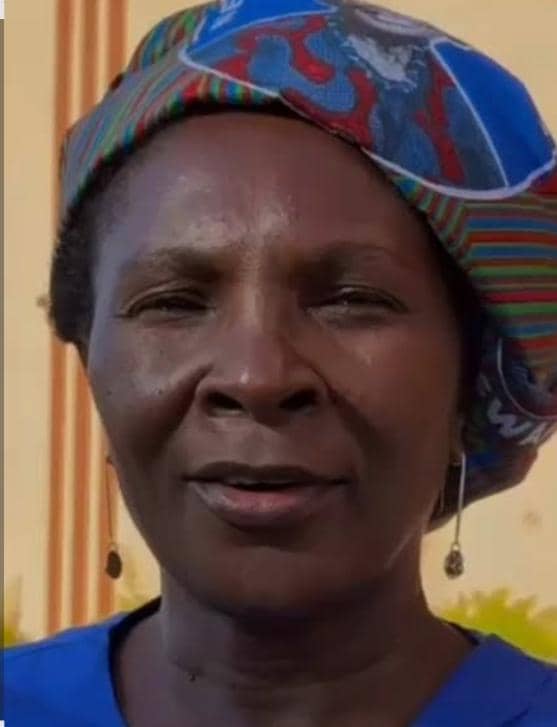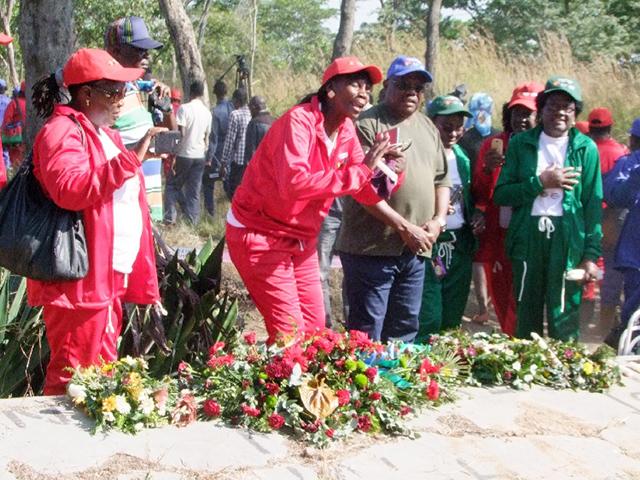RAMATEX has agreed to pay retrenched workers two months’ wages in addition to medical aid and outstanding leave days.
According to well-placed sources, the Malaysian textile giant caved in after Government threatened to confiscate passports and not to allow its top management to leave the country. More than 3 000 workers were left jobless after Ramatex shut down its only remaining division, Flamingo Garments, from one day to the next earlier this month.The company, which has had a troubled stay in Namibia, attributed the move to financial troubles – it claimed it had lost approximately N$500 million, but this was disputed by labour analysts.Namibia Food and Allied Union (Nafau) General Secretary Kiros Sackarias, which has been embroiled in negotiations with the factory’s management, confirmed to The Namibian that the first payments were made yesterday.Sackarias said the agreement he signed with Ramatex General Manager Boon Keon Ong ensures that retrenched Namibians will get two weeks’ salary for every year they worked.That amounts to two months’ salary covering the period up to the end of May.They will also be paid for outstanding leave days and the company will pay 70 per cent of workers’ medical bills for April.”As we all know, there were occupational health hazards and we have decided that all employees be allowed to go for checkups which the company will pay for.The checkups can be done by any qualified doctors and the workers must provide the results to the company,” he said.Sackarias said the agreement also covered the factory’s Filipino and other Asian workers and the Ministry of Finance had agreed to waive tax deductions for the Namibians.”Even though the Filipinos were only entitled to seven leave days a year because their contracts were signed abroad, we put pressure on Ramatex to improve their package and they will get good money before leaving,” Sackarias said.On March 14, the union persuaded Ramatex to commit itself to paying severance packages to the workers.Initially the company had said it would meet the minimum requirement of the Labour Act, which stipulates one week’s wages for every year worked without adding anything else.However, Nafau got Ramatex back to the negotiating table last Wednesday, and pressed for more money for the retrenched workers.Ong felt the closure should not be seen as unexpected – he said the writing had been on the wall for the Windhoek-based factory since 2006.THE HONEYMOON Ramatex started its operations in Namibia in 2001, after the Ministry of Trade and Industry boasted that it had succeeded in snatching the N$1 billion project ahead of South Africa and Madagascar.Afloat in goodwill at having landed the deal, the Ministry drew in NamWater, NamPower and the Windhoek Municipality to put together an incentive package for the new textile factory.It was a package that pandered to the factory, and included subsidised water and electricity, a 99-year tax exemption on land use and over N$100 million to prepare the site, including the provision of electricity, water and sewage infrastructure.The company’s products were mainly exported to the USA, but its production and sales volumes were never made public, resulting in persistent questions about the company’s claim that it was making a loss despite all the incentives dished out to it.The first of the company’s subsidiaries, Rhino Garments, shut up shop in 2005.Last year, following a year of speculation, Ramatex closed its main spinning, knitting and dyeing factories, with only Flamingo Garments remaining.Critics have continually referred to the fact that Ramatex came to Namibia with the intent to benefit from the Africa Growth and Opportunity Act (Agoa).Agoa was passed in the United States at the start of the millennium and gave preferential treatment to certain imports from developing countries.Since Ramatex’s establishment in Namibia, however, Agoa and other similar policies have been reviewed and some have expired, meaning that developed countries have again been left to fend for themselves against stiff competition from especially Asian companies.It has been argued that Ramatex has, for the past few years at least, been trying to get out of Namibia as there was no further incentive for it to stay.More than 3 000 workers were left jobless after Ramatex shut down its only remaining division, Flamingo Garments, from one day to the next earlier this month.The company, which has had a troubled stay in Namibia, attributed the move to financial troubles – it claimed it had lost approximately N$500 million, but this was disputed by labour analysts.Namibia Food and Allied Union (Nafau) General Secretary Kiros Sackarias, which has been embroiled in negotiations with the factory’s management, confirmed to The Namibian that the first payments were made yesterday.Sackarias said the agreement he signed with Ramatex General Manager Boon Keon Ong ensures that retrenched Namibians will get two weeks’ salary for every year they worked.That amounts to two months’ salary covering the period up to the end of May. They will also be paid for outstanding leave days and the company will pay 70 per cent of workers’ medical bills for April.”As we all know, there were occupational health hazards and we have decided that all employees be allowed to go for checkups which the company will pay for.The checkups can be done by any qualified doctors and the workers must provide the results to the company,” he said.Sackarias said the agreement also covered the factory’s Filipino and other Asian workers and the Ministry of Finance had agreed to waive tax deductions for the Namibians.”Even though the Filipinos were only entitled to seven leave days a year because their contracts were signed abroad, we put pressure on Ramatex to improve their package and they will get good money before leaving,” Sackarias said.On March 14, the union persuaded Ramatex to commit itself to paying severance packages to the workers.Initially the company had said it would meet the minimum requirement of the Labour Act, which stipulates one week’s wages for every year worked without adding anything else.However, Nafau got Ramatex back to the negotiating table last Wednesday, and pressed for more money for the retrenched workers.Ong felt the closure should not be seen as unexpected – he said the writing had been on the wall for the Windhoek-based factory since 2006.THE HONEYMOON Ramatex started its operations in Namibia in 2001, after the Ministry of Trade and Industry boasted that it had succeeded in snatching the N$1 billion project ahead of South Africa and Madagascar.Afloat in goodwill at having landed the deal, the Ministry drew in NamWater, NamPower and the Windhoek Municipality to put together an incentive package for the new textile factory.It was a package that pandered to the factory, and included subsidised water and electricity, a 99-year tax exemption on land use and over N$100 million to prepare the site, including the provision of electricity, water and sewage infrastructure.The company’s products were mainly exported to the USA, but its production and sales volumes were never made public, resulting in persistent questions about the company’s claim that it was making a loss despite all the incentives dished out to it.The first of the company’s subsidiaries, Rhino Garments, shut up shop in 2005.Last year, following a year of speculation, Ramatex closed its main spinning, knitting and dyeing factories, with only Flamingo Garments remaining.Critics have continually referred to the fact that Ramatex came to Namibia with the intent to benefit from the Africa Growth and Opportunity Act (Agoa).Agoa was passed in the United States at the start of the millennium and gave preferential treatment to certain imports from developing countries.Since Ramatex’s establishment in Namibia, however, Agoa and other similar policies have been reviewed and some have expired, meaning that developed countries have again been left to fend for themselves against stiff competition from especially Asian companies.It has been argued that Ramatex has, for the past few years at least, been trying to get out of Namibia as there was no further incentive for it to stay.
Stay informed with The Namibian – your source for credible journalism. Get in-depth reporting and opinions for
only N$85 a month. Invest in journalism, invest in democracy –
Subscribe Now!










